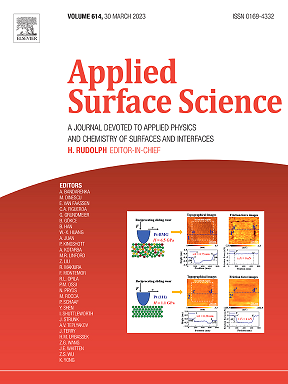Spherical-particle MCM-41 was synthesized at room temperature, and, then, impregnated with aqueous solutions of NH4VO3 to produce variously loaded VOx/MCM-41 composite materials. Bulk and surface properties of the materials thus produced were characterized by means of X-ray powder diffractometry (XRD), infrared spectroscopy (FTIR), N2 sorptiometry and X-ray photoelectron spectroscopy (XPS). Results obtained indicated that subsequent calcination at 550 °C (for 2 h) of the blank and impregnated MCM-41 particles, results in materials assuming the same bulk structure of MCM-41, and exposing uniformly mesporous, high area surfaces (Pw = 2.0–2.3 nm; 974–829 m2/g), except for the material obtained at 20 wt%-V2O5 that was shown to suffer a considerable loss on surface area (down to 503 m2/g). XPS results implied that the immobilization of the VOx species occurs via interaction with surface OH/H2O groups of MCM-41, leading to the formation of vanadate (VO3−) surface species, as well as minor V–O–Si and V2O5-like species. However, in all cases, the vanadium sites remained pentavalent and exposed on the surface.


